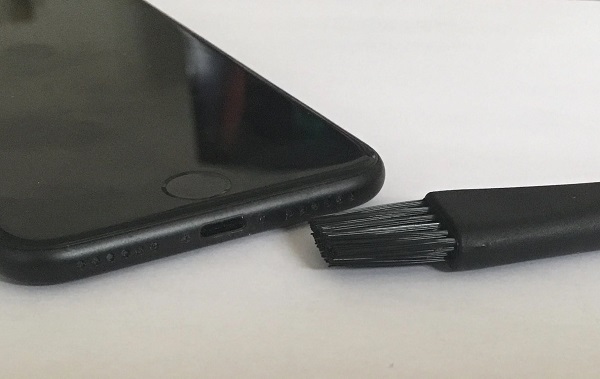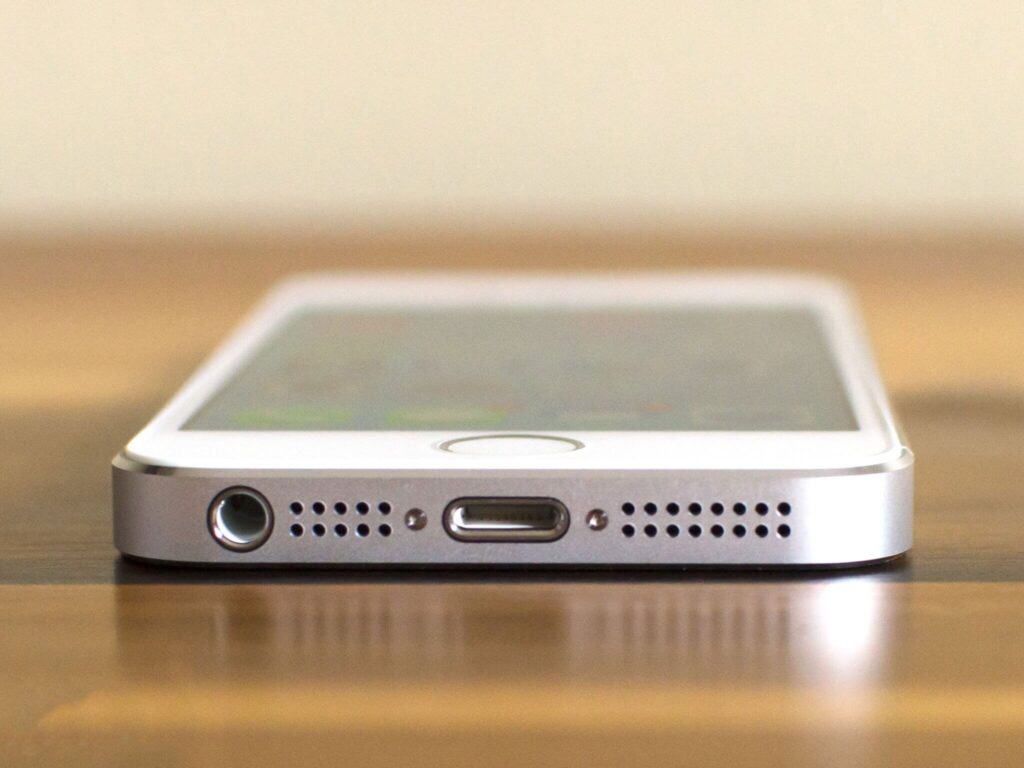You probably feel you’re really careful about keeping your iPhone spotless, but eventually, the time comes when speakers will become jammed with dirt or other gross gunk. As a result of the jammed particles, the iPhone speakers create distorted and blocked audio when playing multimedia or making phone calls.
Have you wondered what good an iPhone would be if it lacked the ability to play sound? Why an iPhone when it will not have any audio capabilities, though?
The most common reasons for difficulties with the iPhone’s microphone and loudspeaker are particles like grit, dust, and pouldraffin lodged in the openings.
They accumulate and block the matches up, diminishing the incoming and outgoing audio quality as time progresses. And worst of all, it can render them completely ineffective.
Instead of paying out a pack of money to have your iPhone fixed, you can fix the issues by following these troubleshooting steps if the loudspeaker or headphones suddenly stop working.
However, if they do the job, you should probably clean it on a regular basis to avoid the formation of dust. In addition, you won’t have to worry about how to clean the iPhone speaker because we’ll supply detailed information and guidelines on how to do so.
Cleaning Speaker on The iPhone — How Ports Dirt Can Affect Sound Quality?
You may definitely be aware that the iPhone offers two speakers. Each iPhone version of the 8 series and later will have two parallel pairs of “sound holes” right at the very bottom of the iPhone.
The speakers’ quality is seriously reduced when tiny particles are in the iPhone’s audio ports. This dirt not only has an impact on the sound quality, but it also has the potential to impact the performance quality of an iPhone.
If you want to get the most out of your iPhone, you should be familiar with how to get the dust out of iPhone speakers.
best way to clean iPhone speakers
The audio of the iPhone is mostly muted due to the amount of dirt that exists in the majority of speakers. Now all the latest versions of the iPhone have a fully integrated filter that collects dirt and other particles in the air.
By cleaning the filter on a consistent basis, you can easily remove unwanted particles that may be affecting the audio clarity and its performance.
It is entirely dependent on the items or materials that you have access to utilize in order to clean the dust off of your iPhone speakers, and a variety of techniques can be used. In this article, we will provide a comprehensive walkthrough of each of the approaches.
The crucial point to remember while cleaning essential parts is to strongly avoid any liquids. Liquids are harmful to the iPhone’s critical internal components and should be avoided.
Utilize Of Smooth Brushes
Using a smooth brush to clean the speakers of an iPhone is the highly effective and preferred way. Apple discourages users from disassembling their speakers for cleaning purposes. However, the company does encourage utilizing these smooth brushes in an emergency.
Always ensure that your used toothbrush must be from the “soft” or “super smooth” categories. Rub your fingers gently into the brushes to see whether they soften. Nevertheless, if a toothbrush’s bristles are indeed a little rough, they should not be used.

Smooth paintbrushes are an excellent replacement for toothbrushes. These paintbrushes are more gentle as compared to toothbrushes, and the bristles are even smaller, so they won’t scratch the speaker holes.
Use Of Masking Tape to Get Rid of Dust
Masking tape is an easy and efficient technique to remove dust from the iPhone’s speakers. When masking tapes are peeled off, these tapes often leave behind much fewer sticky traces and particles than standard scotch tapes. When compared to traditional stickers, these are simpler to apply and remove.

Masking strips are useful for cleaning the iPhone’s microphone covers. A little strip can be torn off and placed over the speaker. To help the tape capture additional dirt, lightly trace it with your fingertips. Once you’ve cleaned the dirt particles from your iPhone’s speakers, gently peel off the tape.
Utilize tiny fans to blow away dirt
The vast majority of people have very tiny particles removed from the blower. Whenever the button is pressed, the blower releases a puff of air. Such dust removal blowers are made from plastic and are so affordable that you can acquire them.
To clean the dirt and tiny particles from your iPhone’s microphone ports, use a vacuum cleaner, if you own one, and blow fresh air through the vents. These dirt bowlers are excellent at eliminating minuscule, non-adherent dust particles from your iPhone microphone because they remove a small quantity of air through the microphone.
Clean the speaker ports on your iPhone by using pressurized air
It has been demonstrated that using a pressurized spray is an efficient method for clearing stubborn dust particles out of the speaker of the iPhone. We will not recommend this strategy unless you have tested it and it has been successful or worked for you.

Caution: pressurized air and gas cleaners may include hazardous materials that pose a significant risk to your body or health. Employ with extreme care and in accordance with all applicable protective measures. Additionally, blowing directly into the microphone of the iPhone might inflict irreparable harm on the device’s equipment.
If you’re equipped with a container of pressurized air, then it may eliminate the dirt and clear it away by blowing air through speaker gates from a tiny space. Using this procedure, you should be able to remove the majority of the dust from the audio system.
Keep your speakers dust-free by cleaning them with toothpicks.
Although after applying compressed air into the holes on the speakers, it is possible that certain dust particles are still attached to the surfaces of the holes.
When that happens, we must resort to this tried-and-true approach to eliminate them. When cleaning the speaker holes on your iPhone, you can use a toothpick as a better option than a little chunk of plastic.
Although you don’t desire to make any mistakes in this section, verify that the speaker shields can be seen from the inside and that there is adequate lighting before applying techniques.
If you want to avoid permanently damaging the microphone on the iPhone, then you should only undertake this activity with great caution.
Microfiber cloth-clean the iPhone’s microphones
The ability of microfiber cloths to remove contaminants and dust without scratching the surface makes them an excellent choice for wiping. It’s no surprise that so many people use these clothes on a regular basis to clean their screens and other solid objects.

This is an excellent method for cleaning microphones without touching them with unclean hands or using a sharp object, such as a paper cloth, which can harm the display and the microphone grills.
This method cannot be applied to really dusty phones, although it will be effective if you maintain your iPhone regularly rather than putting it off until it is really late and then trying to clean it.
Utilizing Sonic Energy Or Sound to Eradicate Moisture from Speaker
It’s possible that the microphone won’t function efficiently after being wet from rain or perhaps even dunked in water. While listening to songs or music using your iPhone, if there is any crackling noise continuously coming from the microphone, this is likely because there is liquid or moisturizer within the speaker ports.
Using this approach to get rid of moisture that has accumulated on the microphone plate is a challenging task. Furthermore, if you produce enough sound at a different spectrum, you can simply control the moisture in the speaker.
You may clean the moist microphone grills by playing similar sounds for a specific period using several available applications.
Produce sounds with a frequency of approximately 160 Hz. When attempting to dry the moist microphone, you can experiment with a variety of sound levels and frequencies to improve your results.
What to Do and What Not to Do When Cleaning The Speakers Of iPhone
What To Do
- Be sure to carry out each step with extreme caution.
- Make sure to only select brushes with soft bristles.
- Perform an initial check on the speakers before moving on to the cleaning process.
- Prior to cleaning your iPhone, ensure that the case has been removed.
What Not To Do
- When cleaning speakers, never use sanitizing or any other liquid of the same kind.
- You should not wash your iPhone in order to clean the speakers.
- It is not appropriate to directly apply compressed air into microphones.
- It is not necessary to clean the speakers if there is a significant amount of dust present.
Final Thoughts
Eliminating the dust that has accumulated mostly on the speakers of your iPhones seems to be a vital step in keeping your iPhones looking as if they were brand new.
In addition to this, you should also consider it a particular point to carry out this practice on a consistent basis. To simplify matters, we suggest choosing any one of the current strategies and carrying it out at regular intervals of at least two weeks each.
Many standard home products may be used to clean dirt on your iPhone microphone, and doing so can save you money compared to repairing the microphone entirely.
If the microphone is still producing sound, then it is operational and has to be wiped; if it does not happen, there are chances or possibilities that it is damaged further than the point of repair.

Benjamin is tech-savvy and loves to research the highly dynamic technological world. Keeping track of all the tech stocks, tech inventions, and latest developments in the tech world keeps him firm.
He has been writing for the past 12 years and is currently connected with ThoughtsGate.com. Playing ice hockey with his childhood friends is what keeps him fresh.
